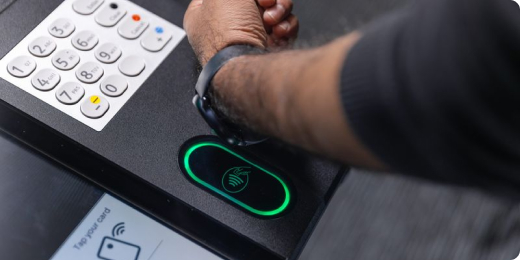Going above and beyond: The evolution of ATM personalization
For years, the concept of ATM personalization has been largely confined to a handful of basic preferences: language selection, quick cash withdrawals, favorite transactions and receipt options. While these functionalities have undoubtedly enhanced user convenience, they represent only the tip of the iceberg in the rapidly evolving landscape of self-service financial access. Today, ATM personalization is moving beyond simple settings to create a user-focused experience that emphasizes accessibility, caters to individual preferences and connects seamlessly across all banking platforms.
Accessibility: A new standard for self-service
Dynamic Yield by Mastercard reported that 86% of financial institutions (FIs) stated that personalization is a clear, visible priority for the company and its digital strategy, with 92% planning to invest further in the practice.
A key driver of ATM personalization is the growing recognition that FIs must prioritize serving a wide range of customer needs. In the UK, for example, to improve accessibility, Santander has introduced color themes designed to reduce visual overload, which can be beneficial for some neurodiverse individuals. Additionally, customizable color schemes provide valuable support to people with specific visual sensitivities. For instance, individuals with retinitis pigmentosa can select yellow text on a black background, while those sensitive to bright light can opt for a beige background, making ATM use more accessible.
By making its personalization features available to everyone, not just their own customers, Santander has the potential to attract individuals who appreciate this level of consideration. This also indicates that they're thinking beyond their existing customer base, focusing on the wider community. This approach will build brand loyalty and help them stand out in the market—potentially making their ATMs the go-to for many consumers.
Consumer demands and technological shifts
Personalization is increasing due to consumer demand. Accessibility, speed, and convenience are paramount, with users expecting ATMs to remember their preferences and streamline transactions. Why, for instance, should a non-native speaker be repeatedly prompted to select their language? Or why should a customer who never requests a receipt be asked every time? These minor inconveniences significantly impact user satisfaction. Streamlining the personalization process by avoiding redundant prompts and anticipating user needs greatly enhances the experience.
Modern, software-driven ATM applications enable the storage and recall of user preferences, a crucial element for delivering these personalized experiences. This capability enables FIs to offer a wider range of customization options, from tailored transaction flows and menus to language preferences and branded interfaces.
However, FIs operating on legacy systems face significant limitations in implementing these advanced features. The transition to modern, digital platforms is therefore essential for FIs to meet evolving customer expectations and remain competitive in today's market.
User-centric design
Personalization thrives on ease of use and adaptability because, at its core, it's about empowering the customer. If the process of tailoring an experience is cumbersome or confusing, it defeats the purpose. Customers should find setting preferences simple and be able to easily change or undo them if their preferences change over time. This means clear, intuitive interfaces and straightforward language.
A user experience that offers smooth, flexible adjustments and easy returns to default settings helps to create a more positive interaction. Imagine a customer needing to quickly increase font size due to changing lighting conditions or wanting to revert to a familiar layout after experimenting with new settings. These actions should be seamless, requiring minimal steps and providing immediate feedback.
Setting benchmarks in ATM personalization
Geography and culture play a significant role in how ATM personalization evolves. In the Middle East, for example, the emphasis is on brand differentiation through customizable themes and personalized experiences. With consumers relying on ATMs multiple times weekly for routine transactions, the ATM serves as a vital brand touchpoint, highlighting the importance of personalization for strengthening customer relationships.
As a result, FIs in this region are exploring color themes linked to different account types, for example, youth and VIPs. With the widespread popularity of English Premier League in the region, Gulf-based FIs are considering allowing customers to personalize their ATM interface with their favorite football team's colors. This level of customization, unimaginable a decade ago, now offers FIs a powerful competitive advantage, highlighting the critical role of cultural sensitivity in ATM personalization.
In India, where long ATM queues are common, the focus is on speed and efficiency. FIs prioritize features that minimize transaction times, as evidenced by their fifteen-year history of offering rapid cash withdrawals, preferred receipt settings and language choices. This approach directly reduces time spent at the ATM, benefiting both customers and FIs by enhancing transaction efficiency. For example, a dedicated personalized button for a frequent ₹5000 withdrawal without a receipt can dramatically shorten transaction times, potentially by as much as 40%.
FIs in the US and Canada are at the forefront of creating seamless omni-channel customer experiences through the implementation of advanced technologies. By integrating language preferences between ATMs and call centers, they are ensuring a consistent and personalized user journey across all touchpoints.
Imagine setting accessibility and language preferences—such as Spanish, large font and dyslexia-friendly settings—once and having them automatically applied across mobile apps, online banking, ATMs and even written correspondence. While full implementation remains a future goal for most FIs, this level of integrated personalization represents a significant opportunity to enhance customer experience and accessibility by creating a truly unified and consistent user journey.
Enabling enhanced customer experiences
Customizable font sizes are another form of ATM personalization that is gaining momentum, particularly in regions with aging populations. The ability to adjust font sizes on ATM screens, a seemingly simple feature, can significantly enhance usability and accessibility. However, its implementation presents technical challenges, particularly for certain languages such as German where grammatical structures and stylistic preferences may result in longer sentences than in English. This demonstrates the need for modern, flexible ATM software platforms, as automatically adjusting font sizes while maintaining a user-friendly interface requires advanced software development.
Integration and innovation are the future
Emerging technologies like AI and machine learning have the potential to significantly enhance ATM personalization. While basic personalization doesn't require AI, it can significantly enhance targeted marketing and personalized communication. For example, ATMs could display advertisements tailored to a user's age, financial behavior or account status. Machine learning can also identify patterns in user behavior and offer proactive solutions, such as overdraft protection or higher-yield savings accounts. Additionally, AI can strengthen security through biometrics and behavioral analysis.
Beyond targeted advertising, personalization can extend to transaction sets. FIs could offer tiered access to services based on customer value, providing VIP customers with an expanded range of options.
Gamification—incorporating game-like elements into non-game contexts to encourage user engagement, participation and behavior change — is already being used by many FIs across their mobile apps and online banking. Recognizing its power to boost customer engagement, improve financial literacy and encourage positive financial behaviors, FIs are increasingly likely to integrate interactive elements like games, quizzes and reward systems into their ATMs in the coming years. Gamification is proven to drive high engagement, especially among younger users. Research by Miquido shows that gamification in financial services can positively impact financial behavior by 67.9%.
Embracing the personalized experience
The evolution of ATM personalization signifies a fundamental shift in how FIs interact with their customers. Moving beyond basic preferences, the focus is now on creating holistic, user-centric experiences that prioritize accessibility, cultural relevance and seamless cross-channel integration.
From customizable interfaces that cater to diverse needs to AI-driven insights that anticipate user behavior, the future of ATMs lies in delivering personalized journeys that empower and engage. As consumer demands and technological advancements continue to shape the landscape, those FIs that embrace these principles, investing in modern, enterprise browser-based ATM platforms and innovative solutions, will not only meet the expectations of today's customers but also redefine the very essence of self-service financial access, transforming it from a transactional necessity into a truly personalized and empowering experience.
Let’s explore what’s possible for your business. Our team is ready to connect and discuss tailored solutions that meet your goals.
Thank you for reaching out. A member of our team will be in touch shortly to continue the conversation.



.jpg)



%20(1).jpg)





%20(1).jpg)

%20(1).jpg)




%20(1).jpg)
%20(1).jpg)
%20(1).jpg)

%20(1).jpg)
%20(1).jpg)
.jpg)
.jpg)
.jpg)
%20(1).jpg)
.jpg)
.jpg)
.jpg)




.jpg)
.jpg)
.jpg)
.jpg)
